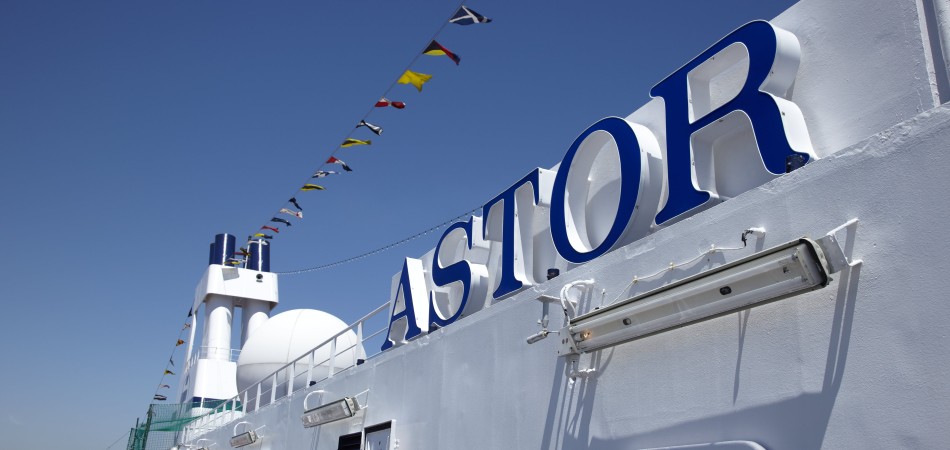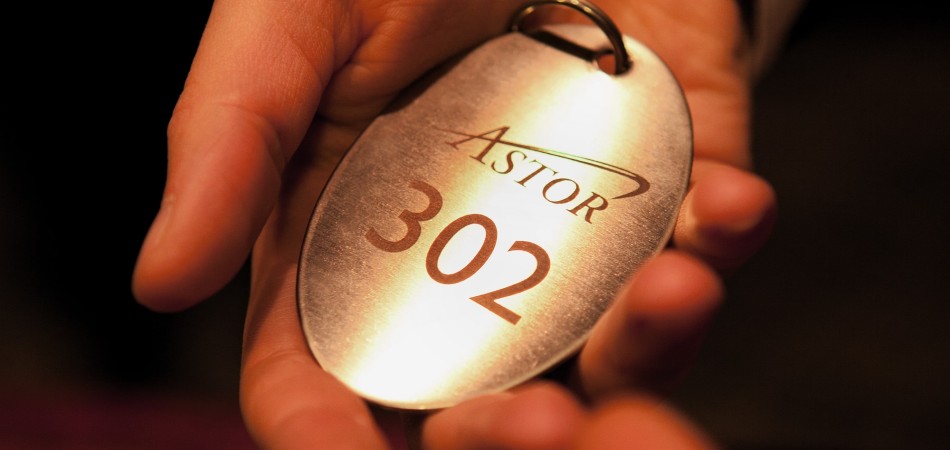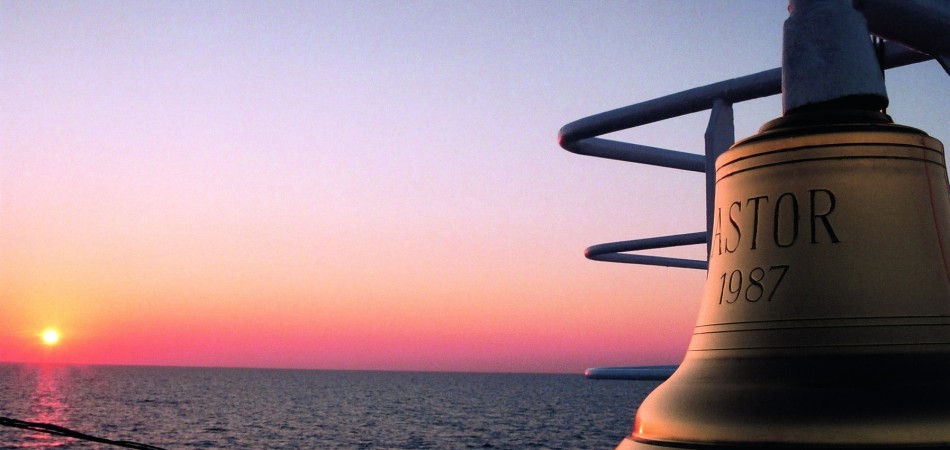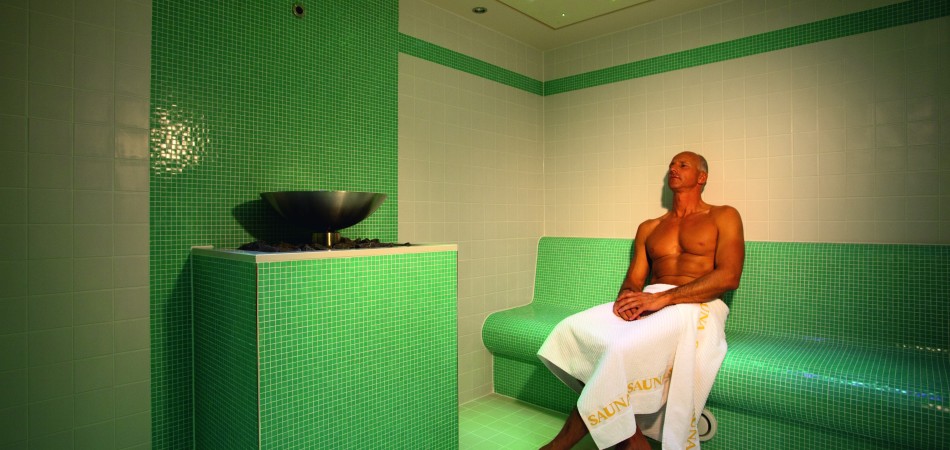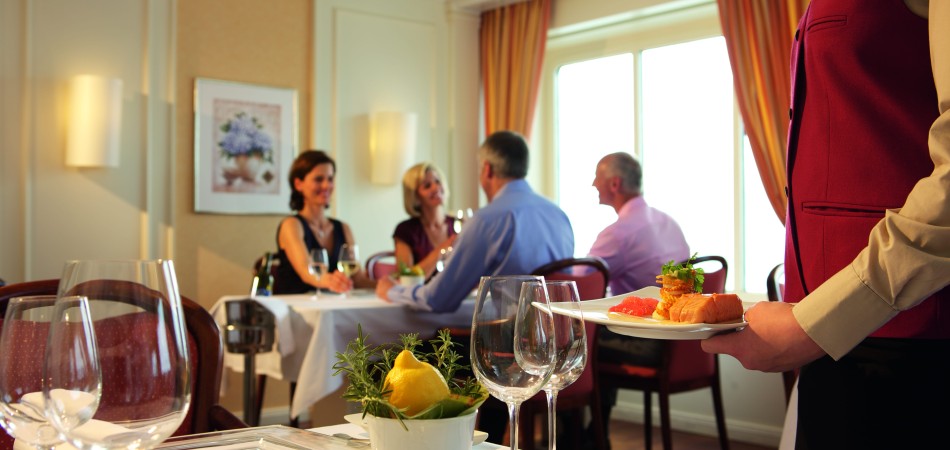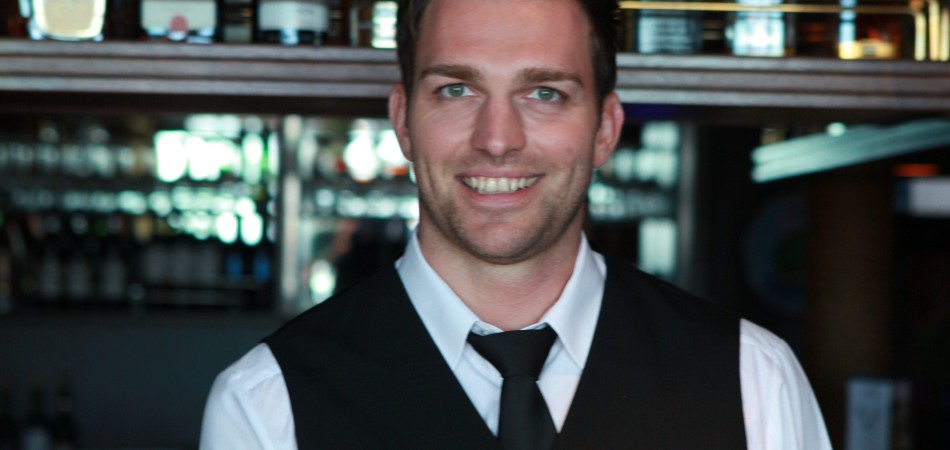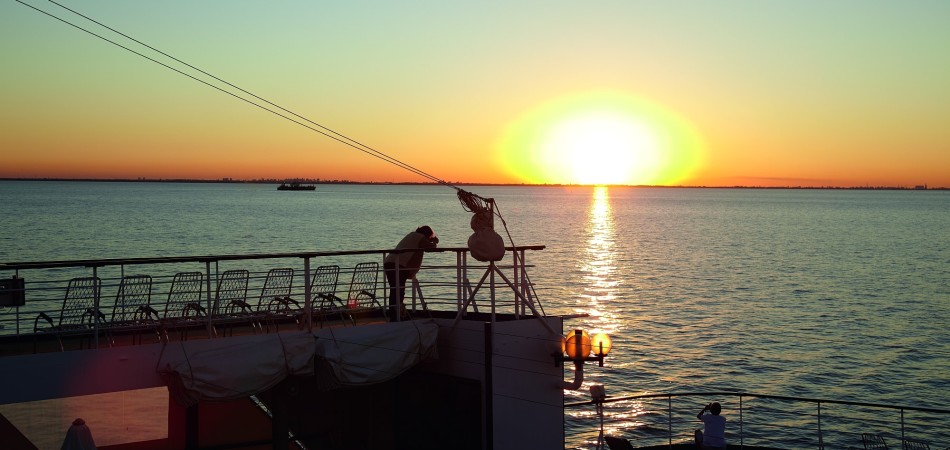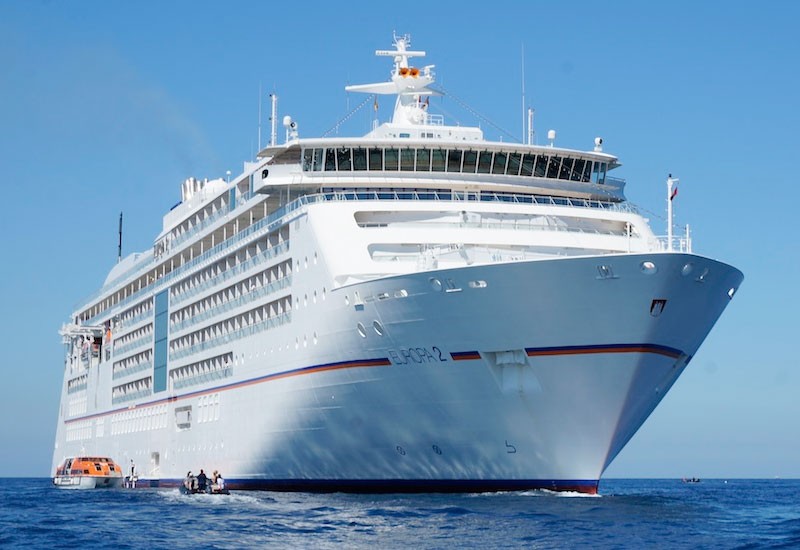Poland, Russia, Finland, Sweden onboard Astor sailing from Hamburg, 10 May 2020, 12 nights from £1718
Carrying only 600 passengers, the Astor provides guests with an intimate environment ideal for relaxation.
Carrying only 600 passengers, the Astor provides guests with an intimate environment ideal for relaxation. With fine cuisine, high class entertainment, comfortable lounges and accommodation, the philosophy of the crew onboard is simply to ensure your voyage is an outstanding and memorable experience.
Please note that the Astor is sold primarily to the German market and therefore the majority of passengers onboard will be German. The crew onboard the Astor speak German and English and you will be provided with English menus and a printed daily programme in English informing you of the days events onboard the ship and port information. The onboard evening entertainment usually consists of various singing and dancing shows suitable for all nationalities.





Itinerary
| DATE | PORT | ARRIVALS | DEPARTURE | |
|---|---|---|---|---|
| 10/5/20 | Hamburg, Germany) | – | 18:00 | |
| 11/5/20 | Passage Cataracts & Iron Gate | – | 05:30 | |
| 12/5/20 | Gdańsk (Poland) | 07:00 | 23:00 | |
| During the more than 1,000-year history of the city of Gdansk, a splendid collection of buildings and monuments of Gothic, Renaissance and Baroque originated. The best way to explore the old town is on foot, starting near the Golden Gate, which once gave access to the city’s medieval defensive walls. The Frauengasse, the Langgasse, the Lange Markt, the Krantor and the splendid Merchantpalast Artushof from the 15th century and the Neptune’s Fountain are just a few of the landmarks that are reminiscent of the glorious Hanseatic period of Danzig. The mighty, medieval St. Mary’s Church in the center of the old town is the largest brick church in the world, which took 159 years to complete. The Gothic Marienburg, located near Malbork on the Nogat River, was the residence of the Grand Masters of the Teutonic Order. The massive, stone fortress is a UNESCO World Heritage Site and has considerable dimensions as well as a labyrinth of halls, dungeons and wonderful architectural details. |
||||
| 13/5/20 | Baltiysk (Russia) | 08:00 | 20:00 | |
| 14/5/20 | Klaipeda (Lithuania) | 06:30 | 16:00 | |
| The charming former Memel is the third largest city in Lithuania and has the only Baltic Sea port in the country. From 1525 Lithuania flourished as part of the Duchy of Prussia, and Memel became after the founding of the German Empire in 1871 Germany’s northernmost city. In the old town of Klaipeda you can follow in the footsteps of King Frederick III. and Richard Wagner’s walk. The half-timbered buildings of the old town still bear clearly the German handwriting, and the German military cemetery tells of sad destinies during the two world wars. The National Park and UNESCO World Heritage Curonian Spit separates the Curonian Lagoon from the Baltic Sea and extends to Russia. The beautiful peninsula enchants with its strictly protected, picturesque dune landscape, the remarkable flora and fauna and the former artists’ colony Nidden, where even Thomas Mann preferred to spend his summer holidays. The elegant seaside resort of Palanga, with its wide golden beaches, is home to the famous Amber Museum, where you can learn all about the Baltic Gold. | ||||
| 15/5/20 | Saaremaa (Estonia) | 08:00 | 18:00 | |
| Saaremaa is the largest island in Estonia with almost 2,700 km2. It was after the Second World War until 1991 a restricted area of the Soviet occupation and completely cut off from the outside world. Now again free and independent presents the fourth largest island of the Baltic Sea with untouched nature, idyllic villages, old windmills and interesting cultural monuments in the island’s capital Kuressaare on the south coast. The founding of the city dates back to the construction of the Arensburg by the Teutonic Order in the 13th century. The medieval fortress and episcopal see is still fully preserved and thus represents a peculiarity in the Baltic region dar. The meteorite impact, in which the remarkable craters of Kaali emerged, took place about 3,000 to 4,000 years ago. | ||||
| 16/5/20 | Tallinn (Estonia) | 07:00 | 15:00 | |
| Estonia’s capital is a fascinating blend of Scandinavian elegance, Soviet era concrete and medieval Hanseatic city. The old town, stretching down from Toompea Hill, is a labyrinth of narrow, cobblestone streets and alleys dominated by ramparts and steeples. The intact, original medieval walled city is interspersed with mighty towers with imaginative names, and above it towers the castle and the Alexander Nevsky Cathedral with its onion domes. In the town hall square with the pretty merchant houses, the council pharmacy and the gothic town hall, as well as in the whole old town, not only the buildings but also the atmosphere of the 14th and 15th century survived. Not far from the city, the Rocca al Mare open-air museum shows Estonia’s rural architecture from the 18th to the 20th century. | ||||
| 17/5/20 | St. Petersburg (Russia) | 07:00 | – | |
| Peter the Great founded St. Petersburg in 1703 as a “window to the west”. Inspired by Europe, the Russian Tsar and his successors created an extraordinary city on the banks of the Neva, whose opulent palaces, magnificent churches and beautiful parks make up a highly elegant architectural ensemble. The grandiose hermitage with its priceless art treasures, the incomparable splendor of the Katharinenpalast in the former Pushkin and the golden fountains in the gardens of Peterhof testify to the elaborate lifestyle of the once ruling tsars and nobility. St. Petersburg is considered the birthplace of the Russian Ballet and is therefore the perfect place to enjoy a masterful dance performance in the evening. | ||||
| 18/5/20 | St. Petersburg (Russia) | – | 19:30 | |
| Peter the Great founded St. Petersburg in 1703 as a “window to the west”. Inspired by Europe, the Russian Tsar and his successors created an extraordinary city on the banks of the Neva, whose opulent palaces, magnificent churches and beautiful parks make up a highly elegant architectural ensemble. The grandiose hermitage with its priceless art treasures, the incomparable splendor of the Katharinenpalast in the former Pushkin and the golden fountains in the gardens of Peterhof testify to the elaborate lifestyle of the once ruling tsars and nobility. St. Petersburg is considered the birthplace of the Russian Ballet and is therefore the perfect place to enjoy a masterful dance performance in the evening. | ||||
| 19/5/20 | Helsinki (Finland) | 09:30 | 15:00 | |
| Finland’s capital is a modern, vibrant city yet is very much in tune with the surrounding nature. The majestic Senate Square, lined with elegant neoclassical buildings and the imposing Lutheran Cathedral with white Corinthian columns and five green domes, is the center of the city. An eye-catching exception to Helsinki’s consistent architectural style is the Russian Orthodox Uspenski Cathedral with its onion domes. It rises on a hill at the end of the marketplace and dominates the skyline of the city. Built in massive rock, Temppeliaukio, better known as the Felsenkirche, also presents itself as a rather unusual place of worship. There are plenty of museums, some of the most notable being the National Museum of Finland, | ||||
| 20/5/20 | Stockholm (Sweden) | 08:00 | 18:00 | |
| They approach Sweden’s magnificent, spacious capital through an archipelago of about 24,000 skerries and islets. Stockholm is itself built on 14 islands, which are connected by about 50 bridges. Founded in 1252, Stockholm evolved from Gamla Stan. The charming old town consists of a labyrinth of medieval streets and tiny lanes along 16th-century buildings. At many houses you can still discover the wrought-iron signs of the old artisan guilds. The Royal City Park Djurgården is a beautiful mix of parkland and woodland. The island is home to the magnificent Wasa Museum, which showcases the upscale Swedish warship that sank during its maiden voyage in the 17th century. | ||||
| 21/5/20 | Rest at sea | – | – | |
| 22/5/20 | Kiel (Germany) | 07:00 | – | |
Note: In case of bad weather or sea conditions that prevent the ship from reaching a planned port, alternative arrangements will be made as far as possible.
![]() Ship is at anchor, ashore by tender boat
Ship is at anchor, ashore by tender boat
* Technical stop, guests can not go ashore
For more information about the Astor please click here
To inquire about this cruise please type in the comment box below. Please include your name, telephone number and email address and we will contact you. Alternatively please call us on 0844 995 1214. We look forward to hearing from you.

